Are you ready to learn how to create a social media strategy?
Would you like to know what to post on social media to support your business?
Then today’s your lucky day! You’re in the right place to discover both of these things!
In our experience, these are the most critical steps to creating a social media strategy:
- Goals
- Metrics
- Avatar
- Competitive Analysis
- Platforms
- Content Plan
Are these every single possible component of a social media strategy? Nope!
My goal here is to help you take the first steps to develop your own custom strategy—in a simple way without overwhelm and without hiring a professional. We’re not here to address everything when it comes to social media strategy…just the first things you need to concentrate on.
Following these steps and documenting your answers will improve your social media marketing. This is a perfect starting point!
But, before you embark on creating your social media strategy, let’s discuss a couple of basics so that we’re on the same page.
What is a Social Media Strategy?
A social media strategy is a plan for how you intend on achieving your goals through social media marketing.
Some strategies focus on marketing, some focus on return on investment. I usually focus on content.
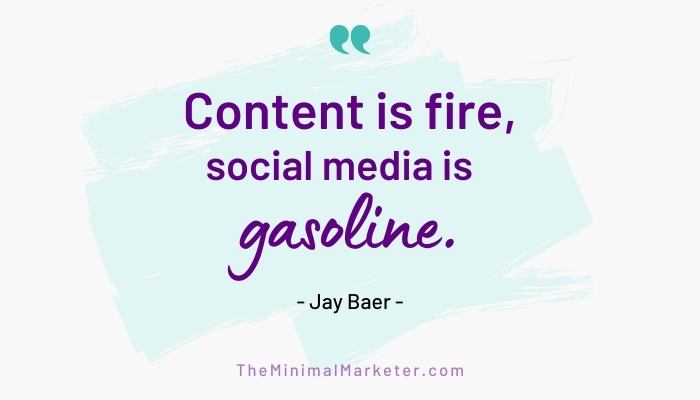
Social media amplifies your content. In other words, it gets your messages out while it helps connect you to and with your audience. In my opinion, purposeful, engaging content is the foundation of an effective social media strategy.
Why Do You Need a Social Media Strategy?
Many businesses post on social media haphazardly and without much purpose. This random behavior is more about reaction than a proactive approach to posting on social media.
You see, a strategy is your roadmap that gives you direction and understanding for what, why, where, how, and when to post on social media.
When you identify your business goals and metrics and align them to your social media posts, you improve your content. This process better attracts your target market and improves your results from social media marketing.
A strategy also makes your social media marketing tasks a bit easier.
Tell me this, are you better at doing a task when you know what that task is?

It’s tough to sit at your desk and not really have a clue what to do. You’re staring at your computer wondering what you should post. You’re wasting time or not moving as fast as you could. Even worse, this pause in your progress takes a mental toll on your progress.
I call this “brain pain,” and I want you to avoid it!
Figuring out your social media plan makes posting better, faster, and less painful while facilitating better business results. #BOOM
Have I convinced you yet why having a social media strategy benefits you?
What is Social Media Content?
Generally speaking, when you hear the term “content,” it refers to the assets you create and publish online.
Examples of Online Content
- blog posts
- videos
- podcast episodes
- webinars
- ebooks
- graphics
- photos
- white papers
In the case of “social media content,” I’m referring to what you publish on any social platform.
Whether the post is an image, video, text, or audio, it is all content!
Now, on to the topic you came here to read about!
How to Create a Social Media Strategy for Your Business
I say this time and time again: one of the most important skills in running a successful business is asking the right questions.
Seems overly simple, right?
However, asking yourself the “W” questions makes an enormous difference:
- Why am I posting on social media?
- Who am I posting on social media for?
- What am I posting on social media?
- Where (which platforms) am I posting on?
When I first started out using social platforms for marketing, I was all over the place on social media (and in my business—but that’s a story for a different post!).
Asking the right questions and figuring out the answers helped in a big way.
Admittedly, there’s some trial and error in this process because you don’t always have the answers from the get go. But you gotta start somewhere.
So without further ado…
Step 1: Set Goals
Why are you posting on social media? In other words, what business objective do you hope to accomplish by having a presence on social platforms?
Yes, yes…you want more sales. That’s the overarching ultimate hope when it comes to marketing. You want more customers, more purchases, more money.
Unfortunately, that’s the myth about social media. Business owners want to post on social media and get a sale. That isn’t impossible. However, in most cases getting sales from a few social posts is highly unlikely (unless you’re Oprah or Tony Robbins).
NOTE: You can run ads to paid offers on social media, but this discussion excludes paid media and advertising.
PRO TIP: Figure out what actions make sales happen, and make those your goals for social media.
For example, let’s pretend you know that people who download a freebie from you turn into email subscribers. And, you know that email subscribers end up buying from you 20% of the time.
Then your business goals are to:
- increase freebie downloads
- grow your email list
These things, in turn and over time, generate sales.
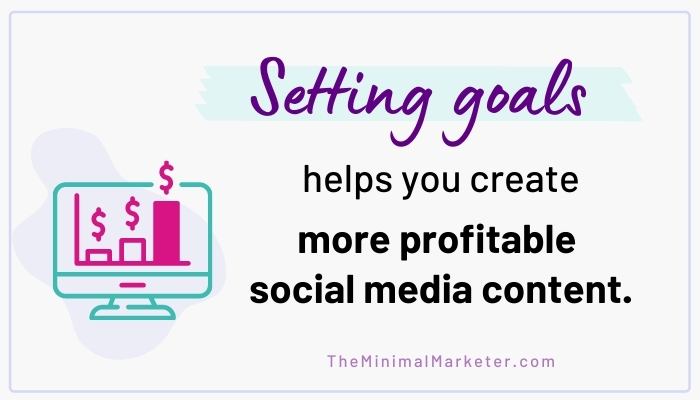
Do you see how these goals contribute to posting more profitable content on social media?
Understanding that your social media posts need to inspire people to a specific action (like downloading your lead magnet) means you’ll create content that leads to the action.
Step 2: Identify Metrics
Now that you know your goals, how will you measure your progress?
This step is all about setting specific targets for your goals. Metrics give you the ability to analyze what you’re doing so that you can modify your actions as needed.
Let’s use the example from the previous step.
If your goals are:
- increase freebie downloads
- grow your email list
Then you may aim for metrics along the lines of:
- Reach 100 downloads every month
- Increase email list by 25% every quarter
You do need to put mechanisms in place to track your metrics. Otherwise, how are you going to know if social media is responsible for reaching your numbers?

In this example, your downloads and email subscribers could result from organic search traffic to your website rather than your social media efforts.
Methods of tracking vary based on what systems you’re using, what types of metrics you’re assessing, and the level of specificity you want to monitor.
Don’t let tracking and metrics scare you away.
Right now, focus on identifying specific metrics that are trackable and how often assess your metrics (like every 30 days). You can worry about how you’ll track your metrics later.

Step 3: Define Your Target Market or Avatar
Why does everyone tell you to define an avatar? Because knowing the WHO helps you define the WHAT.
Put another way, identifying your ideal target customer guides you to create social media content specifically for that person. This makes your marketing much more effective.
The more details you know about your avatar, the better you are at talking to them through your content. You can address things related to their challenges, beliefs, dreams, likes, dislikes, habits, culture, age, and their sense of humor.
![]()
Content that connects with your avatar personally, emotionally, and logically attracts the appropriate audience. And, you will improve your chances at conversion.
For example, the audiences of a realtor and a marital arts studio want and expect to see different social media posts.
The tastes and interests of their target markets differ greatly. And the posts need to reflect this, which is why tailoring your social media content to a specific avatar is mandatory.
I’m the first to admit that this step is difficult for people, especially those who have new businesses that serve many audiences. Defining an avatar is a step that my clients often struggle with, including me!
So, start with one person in mind and start with what you know. For what you don’t know, guess.
PRO TIP: Having trouble coming up with a description of your avatar? Use an existing customer to create a mental picture of your target market’s characteristics, desires, and goals.
You’ll know if you’re hitting the mark by how your content performs. If your results aren’t good enough or you’re starting to learn more about your ideal customer, re-visit this step.
It’s okay for your avatar to be a work in progress, just like your business!
Step 4: Analyze the Competition
To see what’s working in your industry, research your competitors and their social media accounts.
Why not take advantage of those who have tried things before you to see the results? There’s nothing shameful or embarrassing about getting ideas, inspiration, or strategic insight from your competition.
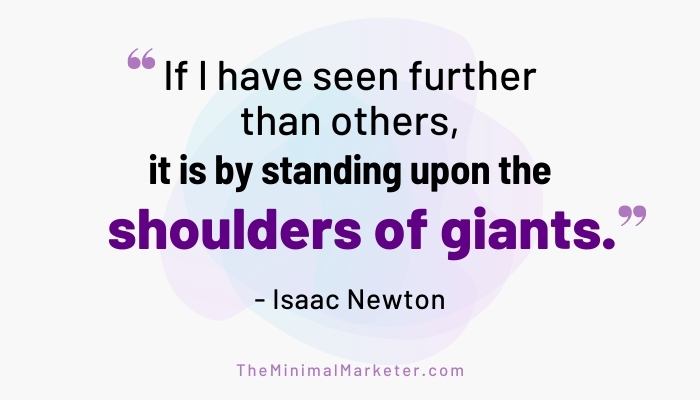
Choose three competitors to review.
Create a spreadsheet with the competitors’ names across the top, one per column.
On the left side in column one, list out certain parameters (one per row).
Then analyze each competitor per item. Be as generic or detailed as you want. The better your notes, the better your data!
Things to pay attention to:
- Platforms where active
- Number of followers
- Posting frequency
- Level of fan engagement
- Responsiveness
- Comments
- Hashtags
- Types of content
- Branding
- Consistency
- Profile quality
Reviewing your competition takes time. You may not know exactly what you’re looking at or what you’re looking for! But you’ll find similarities and differences that will help you make an informed decision about your own social media strategy.
Now is a good time to capture your ideas and thoughts that may pop into your mind about your avatar, industry, goals, and your posts. Again, your competitors will teach you a lot!
Step 5: Choose Your Platform
After you know more about your avatar and competition, you’re in a good spot to decide on which platform to start building a social media presence.
PRO TIP: Even if your target market and your competitors are everywhere on social media, start with ONE PLATFORM.
Social media marketing is a giant pain in the butt when you’re a solopreneur who manages it all. (There, I said it!)
Organic social media marketing doesn’t typically produce immediate results. It can feel quite exasperating and futile!
If you can’t outsource to a professional, choose one platform where the majority of your audience hangs out. Also, consider your skills, preferences, and comfort level to eliminate platforms.
For instance, if you don’t want to create videos, then YouTube is out. If you love creating vertical images on the fly, then maybe Instagram Stories is a good choice.
But, make sure your audience is on the platform you choose! Otherwise, you won’t be reaching your target market. 😉

Step 6: Outline a Simple Content Plan
Okay, you have come a long way! You’re finally at the point where you are figuring out what to post on social media to reach your target market AND your business goals. WAAAHOOO!
You have your marching orders with your goals and your metrics. You know who is reading your posts and what the competition is doing. Now it’s time to create your own social media content plan.
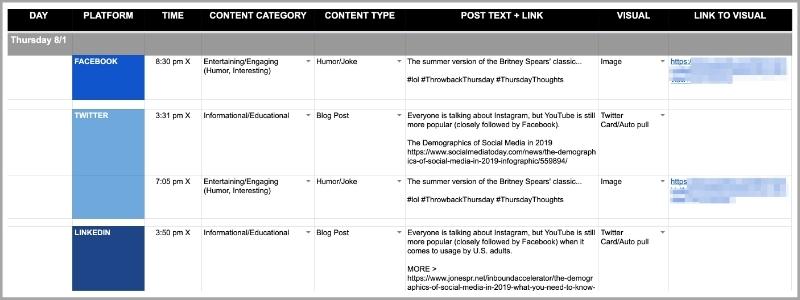
Make the majority of your posts personable and less intrusive by creating informational, educational, entertaining, and personal content.
About 10-20% of the time, focus on directly related business content. This is content like freebies, sales, discounts, testimonials, and customer support. People are on social media to interact and engage, so typically this type of content doesn’t perform as well since it interrupts the user experience.
Not sure where to begin? Content that appeals to emotions, builds your authority, and helps your avatar solve their problem is a great place to start. Just make sure your posts are relevant to your goals and your avatar!
Types of Popular Content
- Quotes
- Humor
- Tips
- Tutorials
- Industry news/updates
- Statistics
- Videos
- Educational
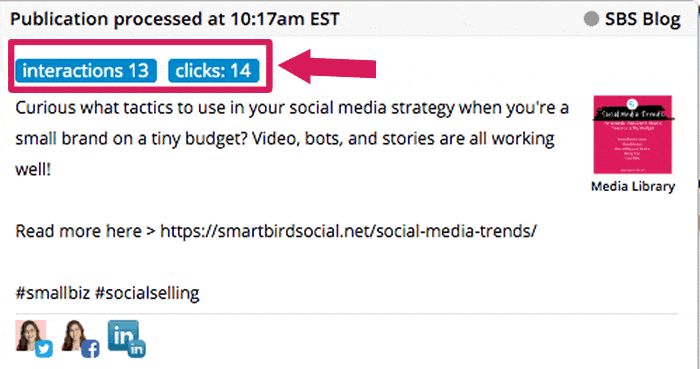
Finally, decide how often you’ll post. If you get overwhelmed creating social media content, you’ll stop. So, start small! Once you’re an experienced content creator, you’ll get faster and wiser. You can always increase your posting frequency over time.
You’re good to go! Your simple strategy is D-O-N-E.
The next step will be creating a social media calendar or content plan.
A Few Tips About Creating Your Social Media Strategy
When you’re swamped and trying to DIY your marketing, these steps will make your life easier. But, you could still complicate the process because that’s what we all tend to do!

Pay attention to these tips when you’re wondering how to create a social media strategy:
1) If you don’t know, guess. You must begin somewhere, and you can always modify your choices.
2) Remember that you’re not posting on social media to inspire a sale but to inspire the actions that lead to a sale.
3) To avoid overwhelm, always think of your strategy as the who, what, when, where, and why of social media. Answer those questions and you’ll be doing better than most businesses!
UPDATED AUGUST 1, 2021 | PUBLISHED JUNE 10, 2019

OMG.. so spot on and I love the fact (duh, right) that GOAL is # 1 in your list. You nailed it when you said “Business owners want to post on social media and get a sale.” They have to remember social media wasn’t created for us, it was created for people (not businesses) and if they treat that tool (social media) for their business, like they do for their personal social media but with the intent (goal) to sell, they are missing the mark completely. I could go on and on, but you know it, you get it. I hope more read this, so valuable in just what you are saying, not to mention the extras you put in here for businesses to USE to kill it. Thank you!
You know these truths better than anyone! Social media is getting to be more work too. Alas, small businesses want to invest less and less into social platforms because they don’t see an obvious ROI. At the very least, I hope readers walk away with an understanding that they can take a sheet of paper out or open a Word doc on their computer and complete these steps. They are entirely manageable! And, these are things any and every marketer needs to do if they plan to 1) run a successful business and 2) market that business using social media. Thank you for weighing in and sharing your valuable insight, Kristen!
Meghan –
What a robust post with a lot of superior advice! As a “solopreneur” it is difficult consistently composing social posts and I’m only on 2 channels. However, this is my fault because I did not put forth a social media strategy. With that said, I will definitely be re-reading this blog post and implementing a social media strategy for my business. I look forward to drafting a strategy and seeing the progress.
Thank you for an insightful blog post! Looking forward to future posts!
Hello Andrew! It’s so awesome to hear from you! You have really made my day with your comment – thank you! It is indeed tough to keep up with social media posting, especially when you’re a solopreneur. This post was written for you! When you identify your goals, you get a much better idea what to post. There’s still ongoing work involved, of course. But a social media strategy makes a noticeable difference and transforms your posts into content that supports your business goals and attracts your target market. I’m excited for you and thrilled this post inspired you to work on your strategy. Please keep me updated on your progress. (PS We offer a fill-in-the-blank downloadable PDF strategy workbook to make this task much easier and faster if you’re interested: https://smartbirdsocial.teachable.com/p/social-media-strategy-workbook-may-2019) Again, thank you for your thoughtful comment, I appreciate you!